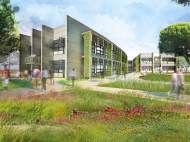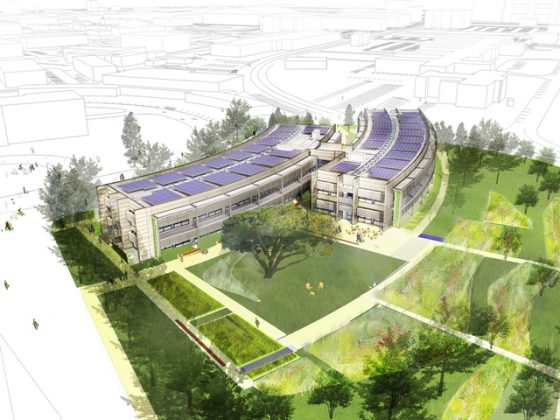Green architecture – NASA’s Sustainability Base
 The guys from NASA decided to work on green projects in order to set an example to other agencies around the world. After so many resources used for their missions, this is one of their first right steps. They decided to use their lunar base sustainable technology in order to make an environmentally friendly building at NASA’s Ames Research Center, Moffett Field, California is being named ‘Sustainability Base’ in honor of the first humans to walk on the surface of another world from their Tranquility Base Apollo 11 lunar landing site 40 years ago. It will serve as a highly efficient collaborative support facility providing workspace for a wide range of NASA’s aeronautics and space exploration missions.
The guys from NASA decided to work on green projects in order to set an example to other agencies around the world. After so many resources used for their missions, this is one of their first right steps. They decided to use their lunar base sustainable technology in order to make an environmentally friendly building at NASA’s Ames Research Center, Moffett Field, California is being named ‘Sustainability Base’ in honor of the first humans to walk on the surface of another world from their Tranquility Base Apollo 11 lunar landing site 40 years ago. It will serve as a highly efficient collaborative support facility providing workspace for a wide range of NASA’s aeronautics and space exploration missions.
“This is a great day for NASA and the federal government”, said S. Pete Worden, director of NASA Ames. “This new building represents NASA’s commitment to sustainability and improving the quality of life on the planet. Given the incorporation of the very latest NASA technologies, I like to think of it as the first lunar outpost on Earth.”
“When the Apollo astronauts looked back and saw the Earth… it was such an astounding image that it served as a touchstone for the whole environmental movement”, said Steven Zornetzer, associate director at NASA Ames. “In the spirit of what’s best for our country, we decided to focus on constructing the most energy-efficient building possible.
The new building is designed to achieve a platinum rating under the Leadership in Energy and Environmental Design (LEED) new construction standards for environmentally sustainable construction. The building will feature near zero net energy consumption, use 90 percent less potable water than conventionally built buildings of equivalent size and reduce building maintenance costs. The building will showcase some of NASA’s most advanced intelligent control technologies originally developed to support the nation’s human and robotic space exploration missions.
To help achieve the building’s sustainability objectives, approximately 72 geothermal wells featuring ground-source heat pumps will be installed, and will provide parking and landscaping with California-native plants. In addition, sophisticated systems for solar water heating, fire detection and suppression, advanced lighting, security, communications operations and site storm water management are also going to be installed.
These systems will be designed to anticipate and automatically react to changes in sunlight, temperature, and wind, and use resources to optimize the building’s performance. The new facility will feature a structural steel frame, stand two stories tall with two wings, and will have approximately 4645 square meters of mostly-open collaborative workspace, lunchrooms and a glass-walled atrium.
The Silicon Valley office of Swinerton Builders, San Francisco, California, was selected in a competitive-bid process to build the new Sustainability Base collaborative support facility. Construction of the $20.6 million building is scheduled for completion by the end of 2011. Sustainability Base is aligned with other future-oriented NASA Ames Earth and sustainability programs such as their collaborations with Google Earth and Cisco’s Planetary Skin.










NASA Sustainability Base was recently certified as a LEED Platinum building. Among other more common technologies used to increase sustainability, this lunar-shaped 4,645 square-meter (50,000 square-foot) building employs adapted NASA aerospace technologies. It is designed to optimize its performance automatically, in real time, and in response to internal and external changes.
It has outdoor workspaces, pleasing views of nature, natural shading and natural daylight, fresh air and its interior is made from non-toxic materials. It is simultaneously a workplace, a showcase for NASA technologies and a living prototype for buildings of the future.